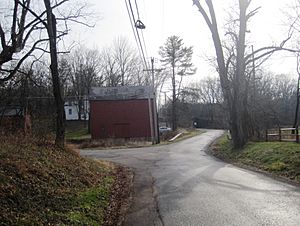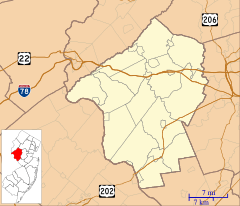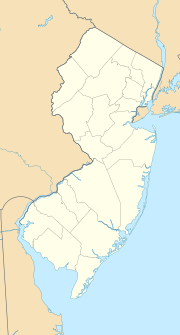Bowne, New Jersey facts for kids
Quick facts for kids
Bowne, New Jersey
|
|
|---|---|

At the intersection of Bowne Station Road and Garboski Road
|
|
| Country | |
| State | |
| County | Hunterdon |
| Township | Delaware, East Amwell and West Amwell |
| Elevation | 167 ft (51 m) |
| GNIS feature ID | 874875 |
Bowne is a small, quiet community in New Jersey. It's not a town with its own government. Instead, it's an unincorporated community. This means it's part of three different townships at once. These are Delaware, East Amwell, and West Amwell. Bowne is located in Hunterdon County.
Contents
Exploring Bowne, New Jersey
The Story Behind the Name
The area of Bowne is named after a person. It got its name from Dr. John Bowne. He was a doctor who owned a farm nearby.
A Stop on the Railroad Line
In the 1870s, something important happened here. The Flemington Railroad & Transportation Company built a railroad. This railroad went right through the Bowne area. It connected the towns of Lambertville and Flemington.
There was a station built at the settlement. It was first called Barber Station. Later, its name was changed to Bowne Station. This railroad line became part of bigger railway systems. These included the Belvidere Delaware Railroad and the Pennsylvania Railroad.
Today, the Black River and Western Railroad owns the line. They started running passenger trains in May 2017. These trains travel down to Woodsedge Farm.
What Bowne Looks Like Today
Bowne looks a lot like the townships around it. You will see a mix of different landscapes. There are many farmlands and forests. You can also find some single-family houses. These homes are mostly along the main roads. The main roads are Bowne Station Road and Garboski Road.
Historic Stone Arch Bridge
A special landmark in Bowne is a stone arch bridge. It crosses a small stream called a tributary. This stream flows into the Alexauken Creek. The bridge is on Bowne Station Road.
In 2024, this bridge became very important. It was added to the National Register of Historic Places. This means it is recognized as a historic site.





